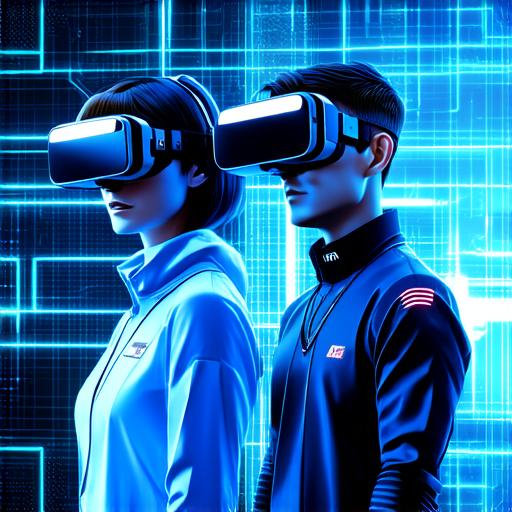
Virtual Reality (VR) and Augmented Reality (AR) are two emerging technologies that have garnered a lot of attention in recent years. While they share some similarities, they also have significant differences that set them apart.
Virtual Reality vs Augmented Reality: An Overview
Virtual Reality is a technology that immerses users in a simulated environment where they can interact with and manipulate virtual objects and environments. Virtual Reality headsets typically include displays that create an immersive, 3D experience for the user.
On the other hand, Augmented Reality is a technology that enhances the real world by overlaying digital information on top of it. AR devices can be smartphones, tablets, or specialized wearables that use cameras and sensors to track the user’s environment and display relevant information in real-time.
Capabilities and Use Cases
Virtual Reality is better suited for applications that require a fully immersive experience, such as gaming, education, and training. With VR, users can interact with virtual objects and environments, creating a more engaging and memorable experience than traditional media.
For example, medical students can use VR simulations to practice surgical procedures, while pilots can use VR simulations to train for flight.
Augmented Reality, on the other hand, is better suited for applications that require real-time information overlay, such as navigation, shopping, and entertainment. With AR, users can see digital information superimposed on top of their real-world environment, making it easier to access information and interact with virtual objects.
For example, a shopper can use an AR app to visualize how furniture would look in their home before buying it, while a tourist can use AR to explore historical sites and learn more about them.
Applications and Use Cases
Virtual Reality has several applications across various industries, including gaming, education, healthcare, and entertainment. For example, VR is being used to create immersive gaming experiences that allow players to fully engage with the game world.
In education, VR can be used to create virtual field trips or simulations that provide students with a more engaging learning experience. In healthcare, VR can be used for surgical training, pain management, and therapy.
Augmented Reality also has several applications across various industries, including marketing, retail, entertainment, and education. For example, AR can be used in marketing to create interactive product displays or virtual showrooms.
In retail, AR can be used to help shoppers visualize how products would look in their home before buying them. In entertainment, AR can be used to create immersive experiences for concerts, sporting events, and movies. In education, AR can be used to create interactive history lessons or virtual field trips.
Expert Opinions and Case Studies
According to Dr. Michael Mankoff, a computer science professor at MIT, VR is better suited for applications that require a fully immersive experience, while AR is better suited for applications that require real-time information overlay.
“VR provides users with an entirely new environment, while AR adds digital elements to the user’s existing environment,” says Dr. Mankoff.
A recent case study by Oculus VR showed that using VR for surgical training improved surgeons’ performance by 30%. The study found that VR provided a more realistic and engaging training experience than traditional methods.
Another case study by IKEA found that using AR to visualize how furniture would look in a room increased sales by 25%. The study found that AR provided a more accurate representation of how furniture would look in a space, leading to better decision-making by customers and higher sales for the company.
In conclusion, Virtual Reality and Augmented Reality are two emerging technologies with significant differences. While VR is better suited for immersive experiences, AR is better suited for real-time information overlay. Both technologies have several applications across various industries and can enhance user experiences in unique ways. As these technologies continue to evolve, we can expect to see even more innovative use cases and applications emerge.
